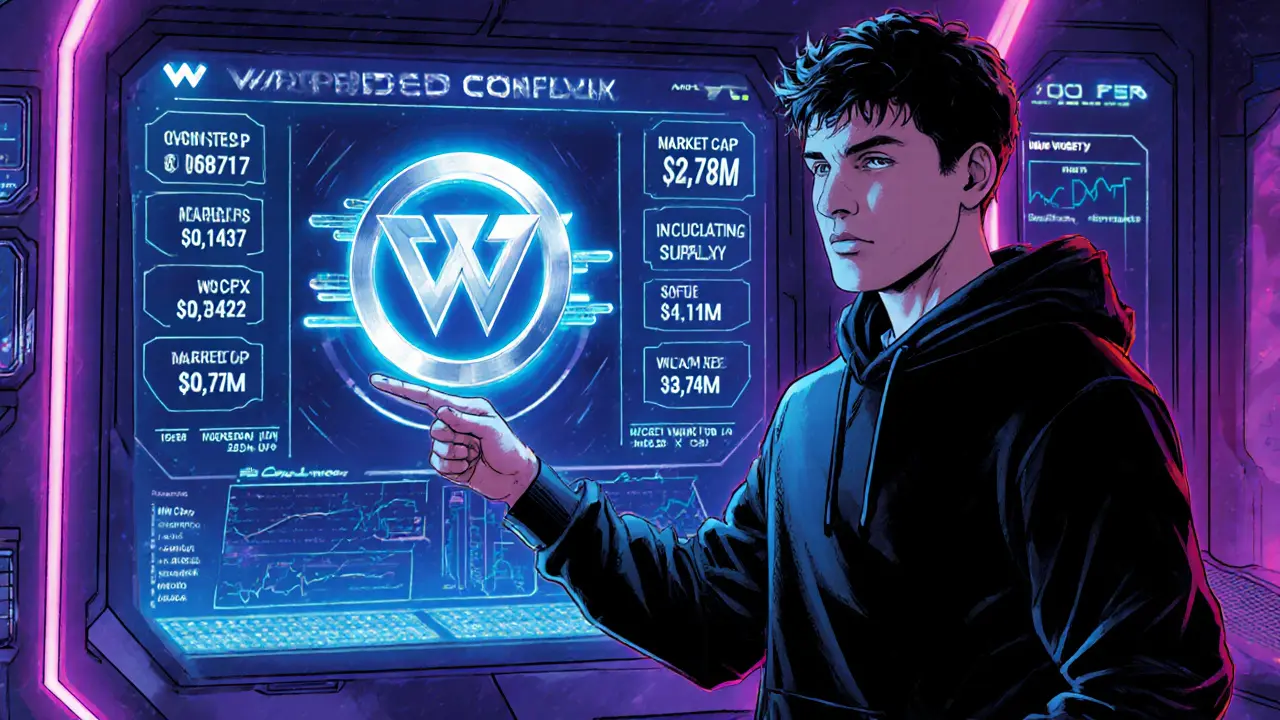What is Wrapped Conflux (WCFX) - A Complete 2025 Guide
Learn what Wrapped Conflux (WCFX) is, how it works, current price data, where to trade, risks, and future outlook in this 2025 guide.
Continue ReadingWhen working with Wrapped Conflux, a tokenized version of Conflux (CFX) that runs on other blockchains like Ethereum, enabling easy transfer and use across ecosystems. Also known as WCFX, it bridges the gap between high‑throughput native chains and the massive DeFi landscape on EVM‑compatible networks.
Wrapped Conflux enables cross‑chain liquidity by locking native CFX on the Conflux network and minting an equivalent amount of WCFX on a target chain. This process, known as token wrapping, the creation of a wrapped version of a native token for use on a different network, requires smart contracts that guarantee a 1:1 peg and can be audited for security. The wrapped token can then be swapped, staked, or used as collateral just like any native ERC‑20 asset.
The cross‑chain bridge, a protocol that locks assets on one chain and issues wrapped equivalents on another, is the backbone of this ecosystem. By leveraging a bridge, users move CFX into a secure vault on Conflux, receive WCFX on Ethereum, and can reverse the process at any time. This bridge mechanism facilitates asset movement while preserving trustlessness and decentralization.
Conflux, a high‑throughput public blockchain that uses Tree‑Graph consensus provides fast finality and low fees for the source side of the wrap. Its ability to handle thousands of transactions per second means that locking CFX is cheap and reliable, which in turn makes the wrapped token attractive for DeFi, decentralized finance applications that provide lending, borrowing, and yield opportunities protocols on Ethereum and other EVM chains.
DeFi platforms leverage Wrapped Conflux for yield farming, liquidity provision, and collateralization. Because WCFX behaves like any ERC‑20 token, it can be deposited into liquidity pools, borrowed against, or used in automated market makers. This expands the utility of the native CFX token beyond its original chain, creating new revenue streams for both token holders and protocol developers.
When evaluating Wrapped Conflux, consider three core attributes: security, liquidity, and interoperability. Security comes from audited bridge contracts and the immutable lock‑up of native CFX. Liquidity depends on whether major DEXes list WCFX and the depth of its pools. Interoperability is measured by the number of chains that support the wrapped version, currently Ethereum, BSC, and Polygon, with plans for more.
Understanding these entities together—Wrapped Conflux, token wrapping, cross‑chain bridges, Conflux network, and DeFi—gives you a clear picture of how assets move across ecosystems and why the wrapped form matters. Below you’ll find a curated set of articles that dive deeper into each aspect, from technical tokenomics to practical trading strategies. Explore the collection to see how Wrapped Conflux fits into the broader crypto landscape and how you can use it today.

Learn what Wrapped Conflux (WCFX) is, how it works, current price data, where to trade, risks, and future outlook in this 2025 guide.
Continue Reading